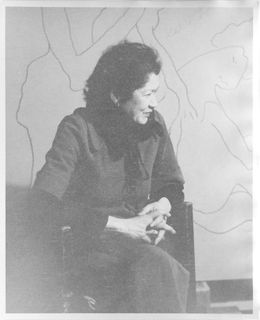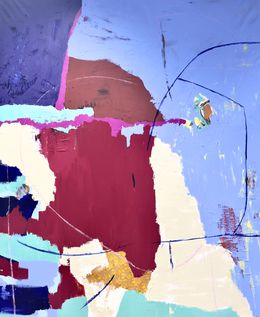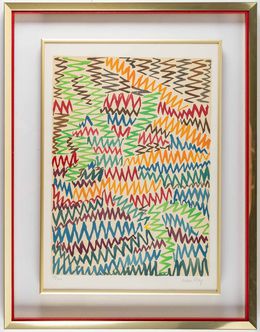
Meet Maja Wismer: The Head of Contemporary Art at Kunstmuseum Basel introduces us to her world
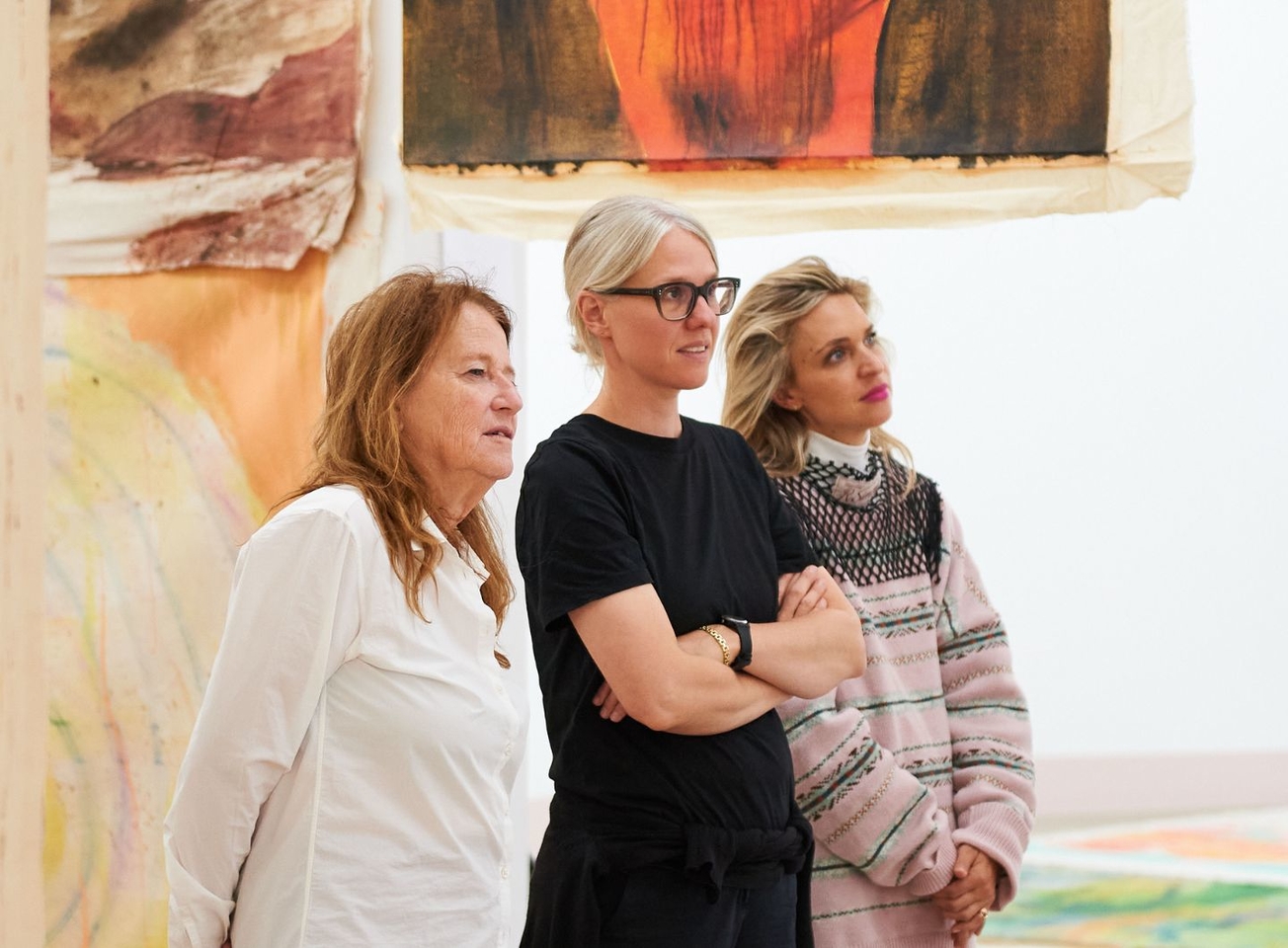
From left to right: Vivian Suter, Maja Wismer and Marina Olsen setting up the exhibition "Vivian Suter. soft and fluffy is my soul - my tummy juices don't worry - are sweet like a liquorice roll" at the Kunstmuseum Basel Gegenwart, 2022. Photo Credit: Max Ehrengruber
Artsper had the opportunity to sit down with Maja Wismer, the Head of Contemporary Art art at Kunstmuseum Basel. We were delighted to hear from Maja about her journey to becoming an art curator, how her work creates projects with an inclusive and feminist contribution to art, as well as providing a new platform for unjustly forgotten women artists. Welcome to the world of Maja Wismer!
1. Hello Maja! Your work as an art historian has led you to the position of Head of Contemporary Art at the Kunstmuseum Basel. Can you tell us more about your professional career and how you came to this position?
I come from a very art-savvy family. Sometimes I surprise myself that I took this step professionally. In fact, however, it wasn't until I was about 17, during a student exchange in the northwestern United States, in Boise, Idaho, that I decided to get involved in art as a career field. Already during my art history studies in Basel and Berlin, I worked variously and regularly for galleries, artists' estates and exhibition institutions, as well as for a publishing house. Directly after my studies I developed projects as a curator in various contexts (art association, fair, self-organized art space). For my current position, my two-year Curatorial Fellowship at the Busch-Reisinger Museum at Harvard University was certainly crucial. There I was able to learn and apply the craft of museum work in a very privileged environment.
2. The Kunstmuseum Basel is considered the oldest publicly accessible art museum in the world and houses the largest public art collection in Switzerland. How do you decide which artists or artworks to focus on in the exhibitions, and what criteria play a major role for you?
This heritage actually plays a role in everyday life and programming as well. In principle, we are always looking for themes or artists that, on the one hand, naturally show new perspectives on the liver or/and art, and on the other hand, are also connectable to the collection or the history of the museum and the development of the collection in very different ways. This is not a hermetic process, as both myself and all my colleagues are in conversation with artists, galleries and colleagues from other institutions. When I think in the direction of a solo exhibition (recently we were able to open the survey exhibition of the artist Andrea Büttner), then of course there is also the intention that it is an artistic position that we would also like to have in the collection. And ideally, we can then realize that.
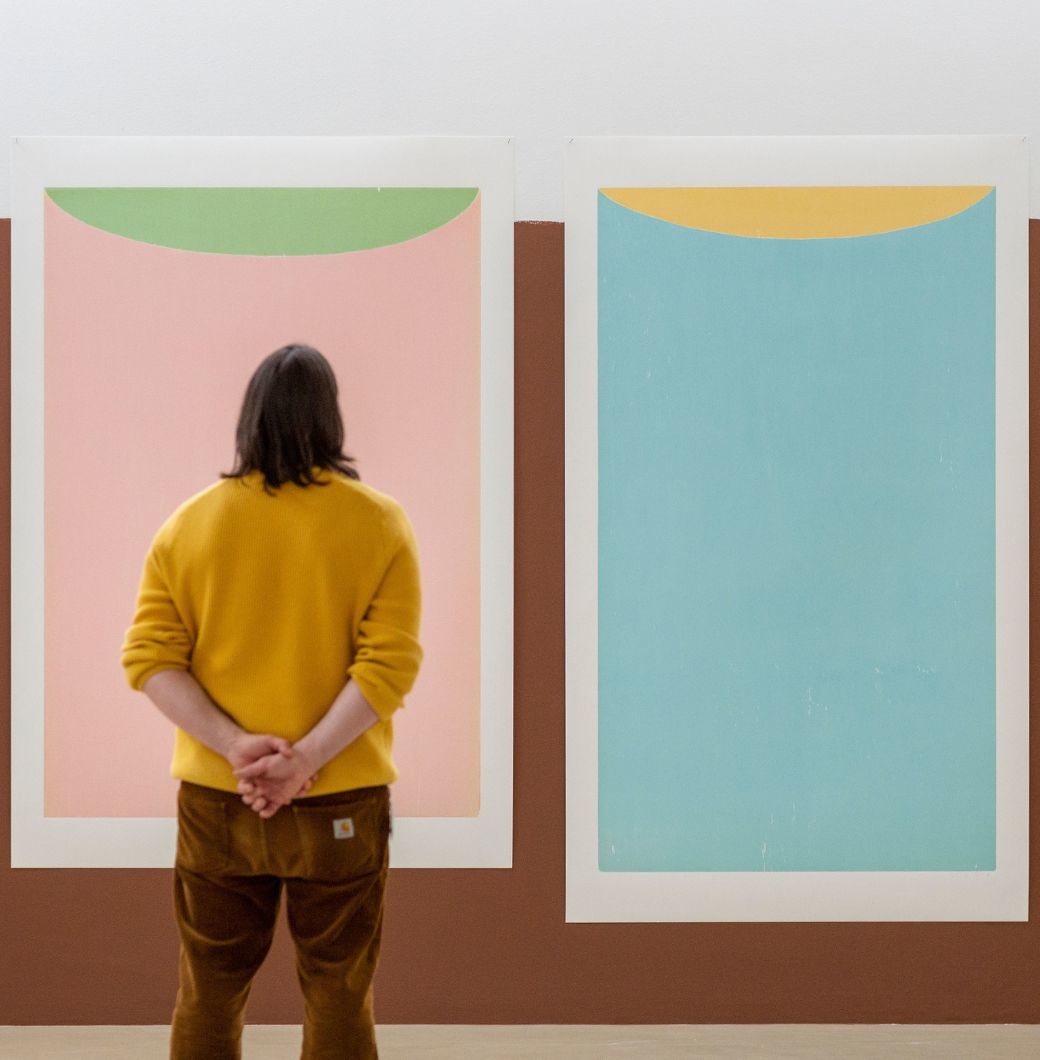

Left: Exhibition view: Andrea Büttner, Untitled, 2017 & Brown Wall Painting, 2006 . Credit: Courtesy of the artist, Lenbachhaus and Kunstbau, Munich. / Right: Andrea Büttner, Phone Etching, 2015. Credit: Courtesy of the artist, Kunstmuseum Basel, Kupferstichkabinett. Photos: Julian Salinas
3. How do you deal with current social and political issues in contemporary art and how do you reflect these issues in the exhibitions and programs of the Kunstmuseum Basel?
In principle, I conceive every exhibition from a contemporary perspective. Even if they are more historical works, I try to spark the audience by highlighting current issues. Recently, in collaboration with the New Zealand Aotearoa artist Ruth Buchanan, we conceived an exhibition as a kind of psychoanalysis of the building that has been dedicated to contemporary art at the Kunstmuseum Basel since 1980, the Kunstmuseum Basel I Gegenwart. The background to this was that I wanted to understand how it comes about that our collection also contains relatively few works by women artists. And very recently, together with three curators, I realized a group exhibition with works that the four of us classified as feminist and “fun" at the same time. This resulted in the highly successful exhibition "Fun Feminism", which was perceived and visited by an unexpectedly broad audience.
4. Paula Modersohn-Becker, Louise Breslau, and Augusta Roszmann... to name just a few of the women artists who were rather underrepresented by art history and have found a special place in the Kunstmuseum Basel. How do you deal with diversity and inclusion, especially in terms of feminist approaches, and how do you promote a representative diversity of women artists in your exhibitions and collections?
The names you mention do indeed belong in art history; in my current position, I am more concerned with art that is yet to become history. But I have actually been able to open an exhibition this year that I've had in the bag for a while because of Corona. It is a monographic exhibition on the completely unknown and historically underrepresented artist Charmion von Wiegand. Charmion von Wiegand is the exhibition of an unjustly forgotten extraordinary artist of the 20th century, who lived and pictorially represented transcultural openness and diversity at an early stage.
It illustrates her artistic work as well as her keen sense for non-Western cultures or for the work of other artists. In connection with this exhibition, I was able to publish an extensive monograph and also write several encyclopedia entries. The whole project is an inclusive and feminist contribution to art history. These two terms are always actually part of my work, sometimes it is more interesting to say them directly, sometimes they show up more hidden. A certain critical view unites all my projects.

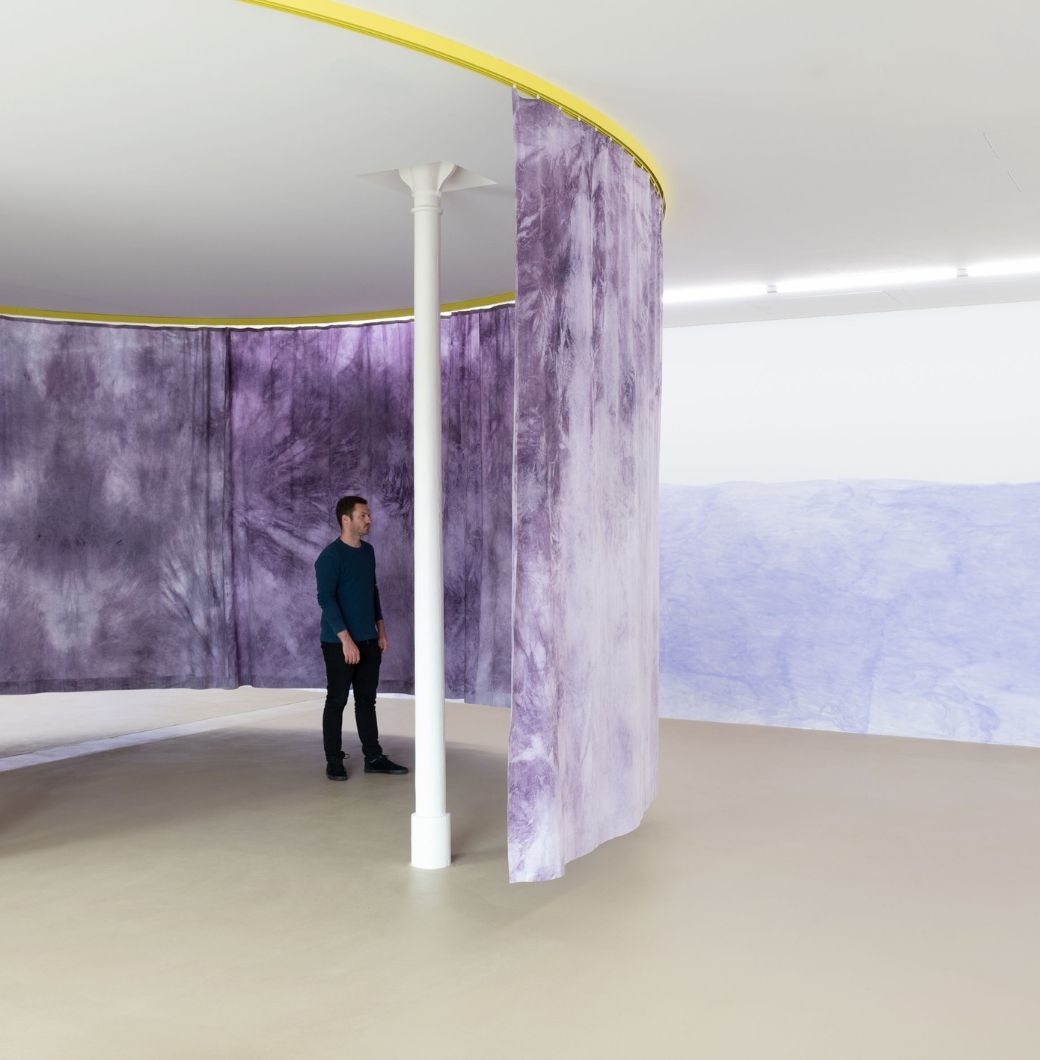
Left: View of the "Fun Feminism" exhibition at Kunstmuseum Basel. Photo: Max Ehrengruber. / Right: Ruth Buchanan, Heute Nacht geträumt, 2022.
5. You curate by profession. We would like to know what art you "curate" in your home? Which artists do you currently have a special focus on and why?
I don't curate at home. I don't collect art privately either. But I live with art. With works by artist friends, smaller purchases, family mementos, sometimes also with reproductions (postcards, posters) of works hanging in large museums. There are a number of artists whose work I follow; sometimes it results in an exhibition; sometimes the works fade into the background for a while and reappear later.
6. Where in the world can we find you outside of Basel? Which places inspire you and why?
It's always good to leave the museum to “test" the themes of art in the outside space, so to speak. In addition to the exchange with the international community, what inspires me most is the far-sightedness. For that, you have to climb the mountains in Switzerland or leave the country to go to the sea. I do both regularly.
Their favorite artworks
